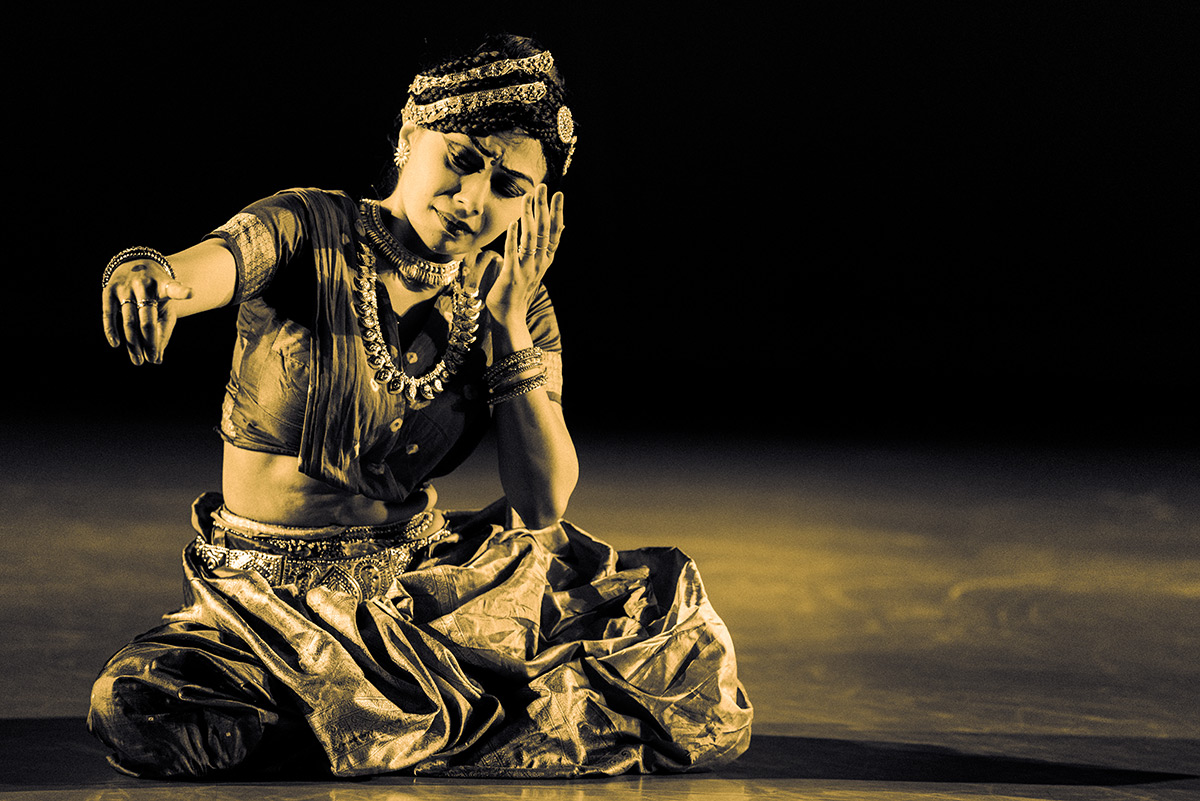
© Toby Shearer. (Click image for larger version)
Maya Kulkarni & Kaustavi Sarkar
Woman with a Parrot
★★★★★ (for film and live shows)
Streamed film and live: New York, Consulate General of India
See streamed version (on demand) as part of Tridha – Three Parables
www.instagram.com/aalokam
coaa.charlotte.edu/people/kaustavi-sarkar
Migration of a Dance

© and courtesy Maya Kulkarni. (Click image for larger version)
The vibrant community of Indian classical dancers in the New York City area was quick to activate driven by a collective curiosity and energetic commitment to their art. This creative impetus evolved into the production of several dance on camera festivals within the community of Indian performing artists.
With the availability of vaccines and the return to live performance in the fall of 2021, some of the works originally created for camera or virtual showing, are now being reconceived for the stage. One such work is that of inspired choreographer and scholar Maya Kulkarni, who created a trilogy of character studies for dance on camera called Tridha – Three Parables, based on temple sculptures at Hampi in Karnataka, India. Kulkarni examined a set of specific sculptures allowing them to provoke her vivid imagination to create three characters – each caught up in a personal drama.
I was particularly taken with the section titled Woman with a Parrot, both for its restrained composition and for the remarkable performance given by Odissi dancer and scholar Kaustavi Sarkar. Kulkarni, in her spoken introduction, claims that the piece investigates a character who is helplessly attached to her pet bird. But actually, the choreography paints two characters – the woman and the parrot – and both are rendered through the skillful artistry of the solo dancer.
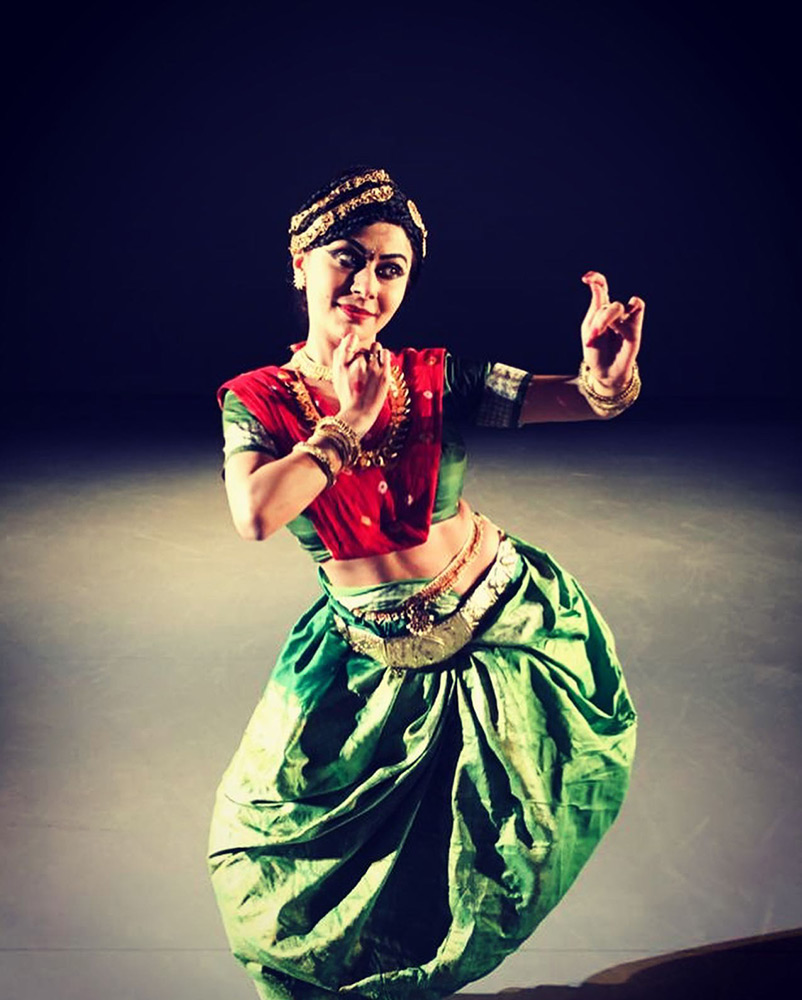
© Toby Shearer. (Click image for larger version)
The supple, arcing and circling torso of Sarkar’s Odissi-trained body (from the lineage of Guru Kelucharan Mohapatra) perfectly captures the woman’s enchantment with her bird as she follows its unpredictable somersaults and flight patterns with every cell of her being. Sarkar’s torso stretches up and tips backward spiraling around in circles trying to keep up as the bird flits about mischievously. The bird’s action and character are mostly created through hand gestures and Sarkar’s facial expressions in reaction to the bird – with special emphasis on the precision of her eye movements. In fact, the dancer’s constantly shifting gaze and head position informs the viewer precisely where the bird is located even though we don’t see it. Sarkar’s fulfillment of the choreography masterfully illustrates the maxim from the Natya Shastra (ancient Sanskrit treatise on the necessary elements for effective dance/drama) that states, “Where the hand goes, the eye follows. Where the eye goes, the mind follows. Where the mind goes, emotion follows. Where the emotional mood goes, rasa (satisfying experience) arises.” Sarkar creates an entire drama by virtue of her hands and eyes and the dynamic relationship between the two.
Of course, the entire drama is undergirded by Sarkar’s assured technical ability, which affords her complete ease in moving in any manner that conveys the nature of her characters. She effortlessly promenades in arabesque as she enjoys the bird perching on her arm or spins around as she chases her playful feathered friend. There is no extraneous dancing; every movement naturally and believably draws the relationship between these two characters. Even with the perfectly measured economy of movement, Sarkar fills the portrait with energetic detail absorbing our attention with her brilliant hand-eye performance.
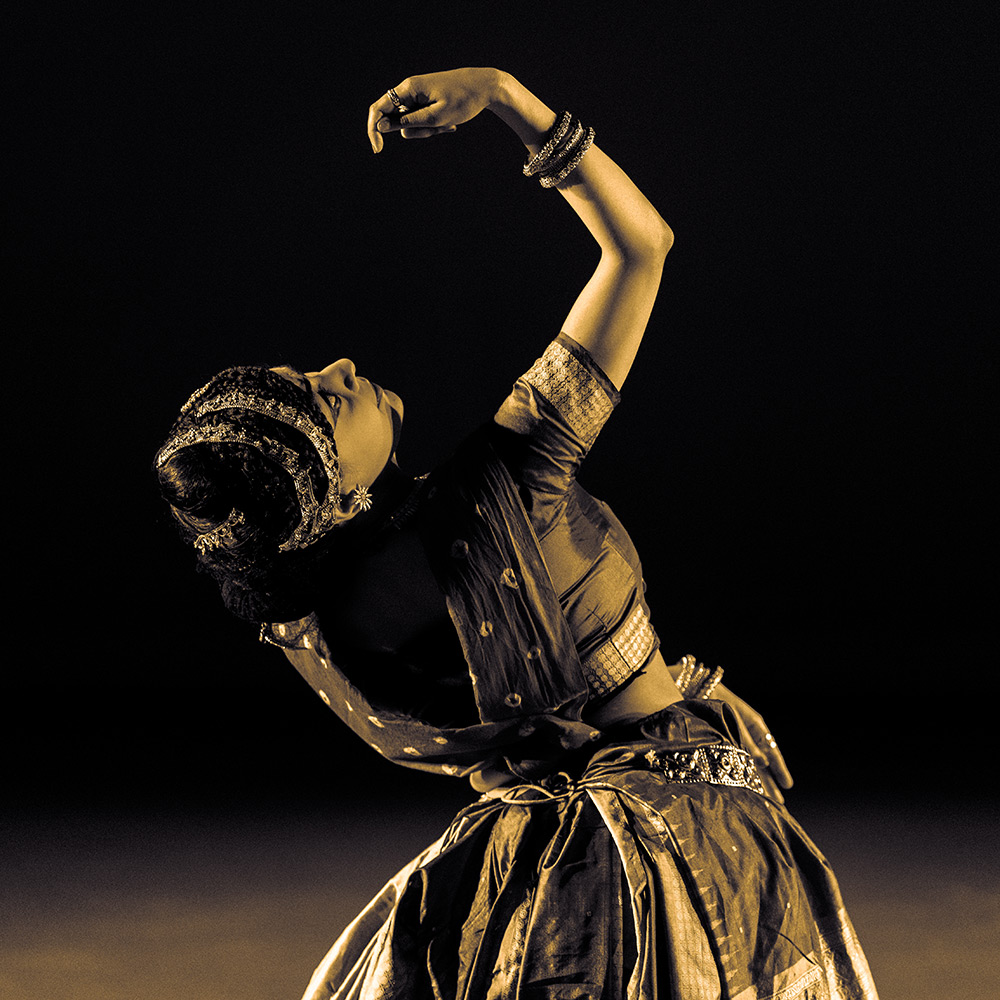
© Toby Shearer. (Click image for larger version)
In the dance on camera production of Woman with a Parrot, the camera’s movement is employed to reflect the action and play of the woman and her pet bird. The camera pulls back as the bird flies away. It pushes in to show the bird’s return and maintains an intimate close-up of their deeply connected interactions. The tasteful use of an editing device creates a double of the dancer that materializes from time to time to dance with herself layering the dance with added poignancy. As a choreographic element, this repeated motif is key because the double represents the bird, which represents the woman’s alter ego – from which she cannot separate.
Woman with a Parrot was reworked and presented in live performance last week at an intimate chamber concert at the New York headquarters of the Consulate General of India in celebration of 75 years of India’s independence. Jonathan Hollander, the ultimate ambassador of dance diplomacy and founder and artistic director of Battery Dance, curated the evening selecting excellent Indian dancers of four distinctive styles. To witness a performance of bespoke quality in a warmly lit, rococo-style salon sitting just feet away from remarkable performers is an enchanting experience. That being said, I was particularly interested in seeing how Woman with a Parrot would evolve in the shift to live performance.
The migration was quite successful! Sarkar and Kulkarni put in additional concentrated hours and effort to make the effective transition. Whereas much of the filmed version focused on the dancer’s face, hands, and arms, the live version included the dancer’s feet! And they moved with bird-like lightness in delightful rhythmic patterns that called attention to the music, a perfectly matched composition created by Sudha Raghuraman. Sarkar’s skitters about the stage chasing the parrot engendered a new elaboration of facial and gestural interactions that provided fresh interest and filled the vacancy left by the absence of her double.
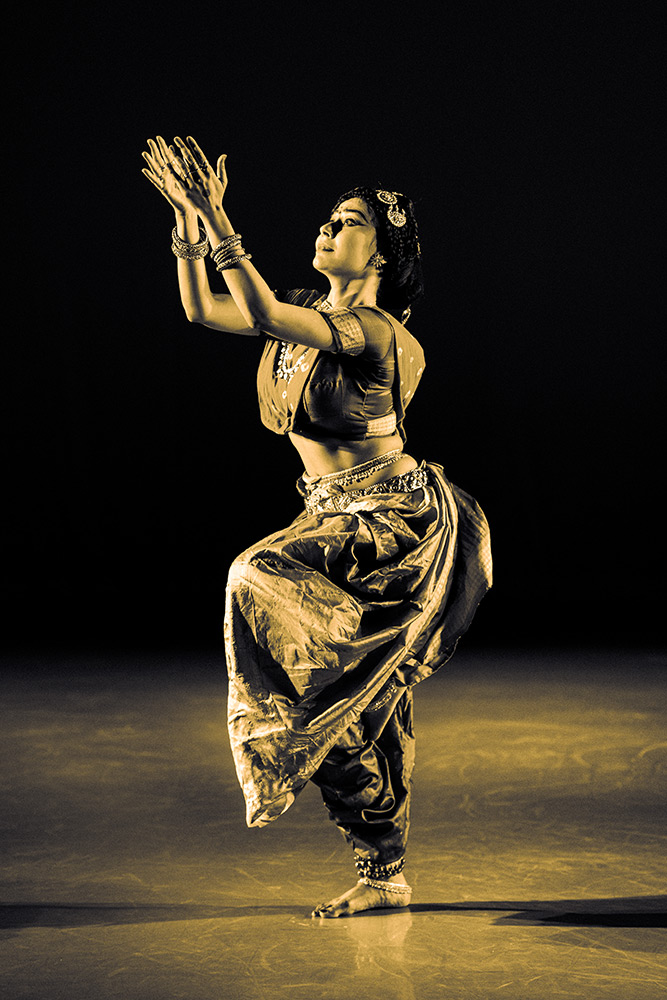
© Toby Shearer. (Click image for larger version)
Toward the end of the dance, the woman notices her bird is no longer singing or thriving. She understands that the bird wants to fly free, but she feels that in losing her closest companion she will experience a death of her own. Sarkar embodies this realization with a complete shift in corporeal tone; the required action weighs her body down pulling it to the floor. She amplifies her breathing making it visible and felt as she vibrates her hands at her chest as if to keep her heart from breaking. No sooner than Sarkar gestures setting the bird free, her arms take on the shape of bird wings – but they tremble and finally stiffen in death’s grip. Although the dance film eloquently focuses our attention on the expressive range of emotion in Sarkar’s face, it cannot convey the experience of a change in rhythmic breathing in the way one living body can communicate to another.
The successful migration of Woman with a Parrot from film to stage is attributable to the open-minded adaptability and intelligence of its creators. As we see more dance works migrating between presentation platforms, these are qualities that should inform the journey.













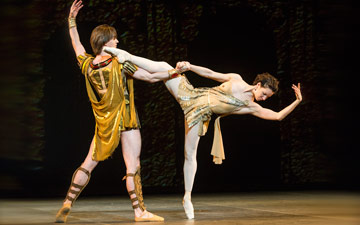



Is the film version availoable for viewers? If so,how can one access it?
At the top of the review it gives details about the performances covered and includes a link to the streamed version. Ed